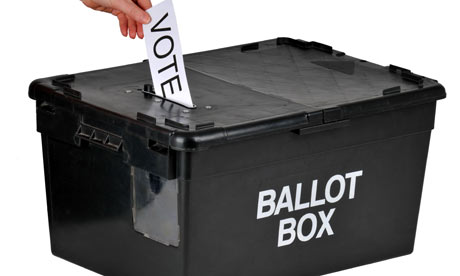The debate over whether bonuses are justified is highly controversial. At the heart of the issue is whether bonuses are effective. This blog will explore one particular sense in which bonuses could be effective: overcoming ‘coordination failure’.
Coordination failure is where everyone could be better off if they coordinated on their actions, but for some reason they aren't. For example, a factory assembly line can only ever go at the speed of the slowest worker. Working faster than anyone else is just a waste of effort and so workers have an incentive to work at the speed of the slowest. Jordi Brandts and David J. Cooper (AER, 2006) did an experiment to test whether bonuses could help the workers coordinate on a faster speed.
They define coordination failure as being “trapped in situations that are unsatisfactory for all involved, even though preferable outcomes are possible” (p.669).
The experiment was designed as follows. Subjects were put into groups of four called ‘firms’. They each decided how much ‘effort’ to put in, with each bit of effort costing them a small amount of money (to represent that effort is not effortless in the real world). They each received a flat wage plus a percentage of the firm’s ‘profits’. However, the firm's profits depended on the lowest effort level that any of the 4 workers puts in. The best outcome for everyone is when all the workers put in maximum effort. Each worker faces the following dilemma: it never pays to put in more effort than anyone else, but it always worth having a more profitable firm.
 |
| http://static.ddmcdn.com/gif/automotive-production-line-1.jpg |
Brandts and Cooper then varied the percentage of firms’ profits that workers received. An increase was called a ‘bonus’. They tested different sizes of bonus to see if suddenly increasing it raised effort.
They found that “subjects respond positively to an increase in the bonus rate, but larger increases do not yield larger responses” (p.680). So bonuses were a good focal point (or trigger) for increased effort, but effort upsurges were not proportional to the size of the bonus. They also found that subsequently reducing the bonus rate did not cause effort levels to fall again.
Thus Brandts and Cooper conclude that a small temporary increase in the financial rewards can overcome a history of coordination failure.
However, there are caveats. While the experiment was well-designed, it still claims a lot of external validity for a laboratory experiment. The financial incentives for subjects were small: over the course of the experiment few subjects would have earned over £15. Also, it only shows bonuses can work in groups of 4.
Crucially, as Brandts and Cooper recognise, “it seems likely that other coordination devices [such as management communication] might also be quite effective in overcoming coordination failure” (p.689).
 |
| http://i.i.com.com/cnwk.1d/i/ne/p/2008/positivo-production-line_550x367.jpg |
Crucially, as Brandts and Cooper recognise, “it seems likely that other coordination devices [such as management communication] might also be quite effective in overcoming coordination failure” (p.689).
Thus it would seem that bonuses can have a sudden positive impact upon effort levels of a team who were previously not coordinating well. However, other ways may be just as effective.
Importantly, this does not justify huge bonuses for CEOs. The idea behind huge CEO bonuses is that they motivate other employees to work hard to one day become CEO. (Whether this is a good idea will have to be the subject of another blog.)
More importantly, is money really the best way to motivate people? Are humans more complex than simple money driven machines?
Relevant listening:
Money, Money, Money by Abba
















